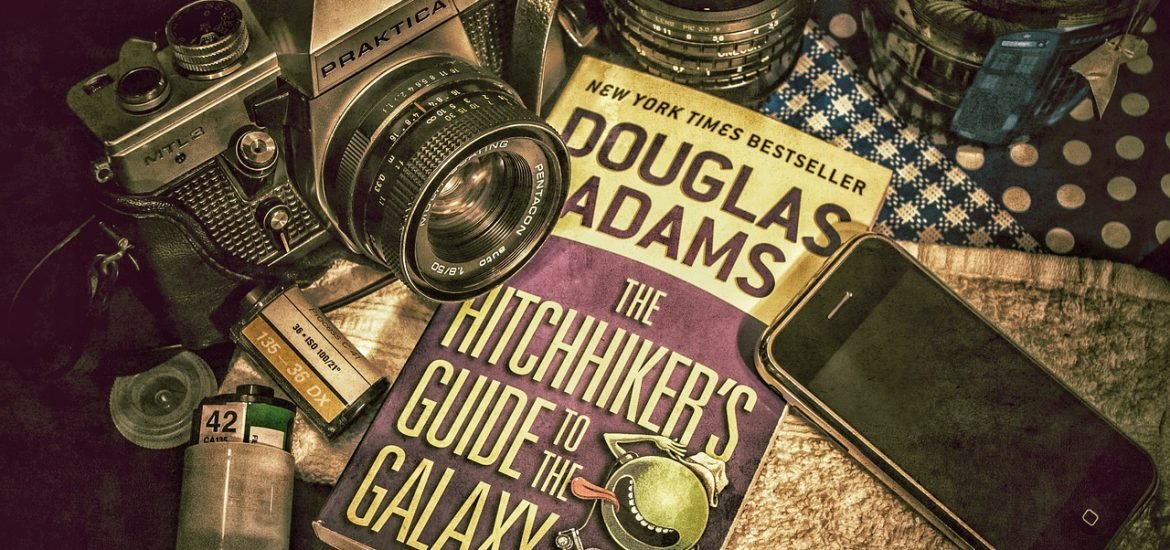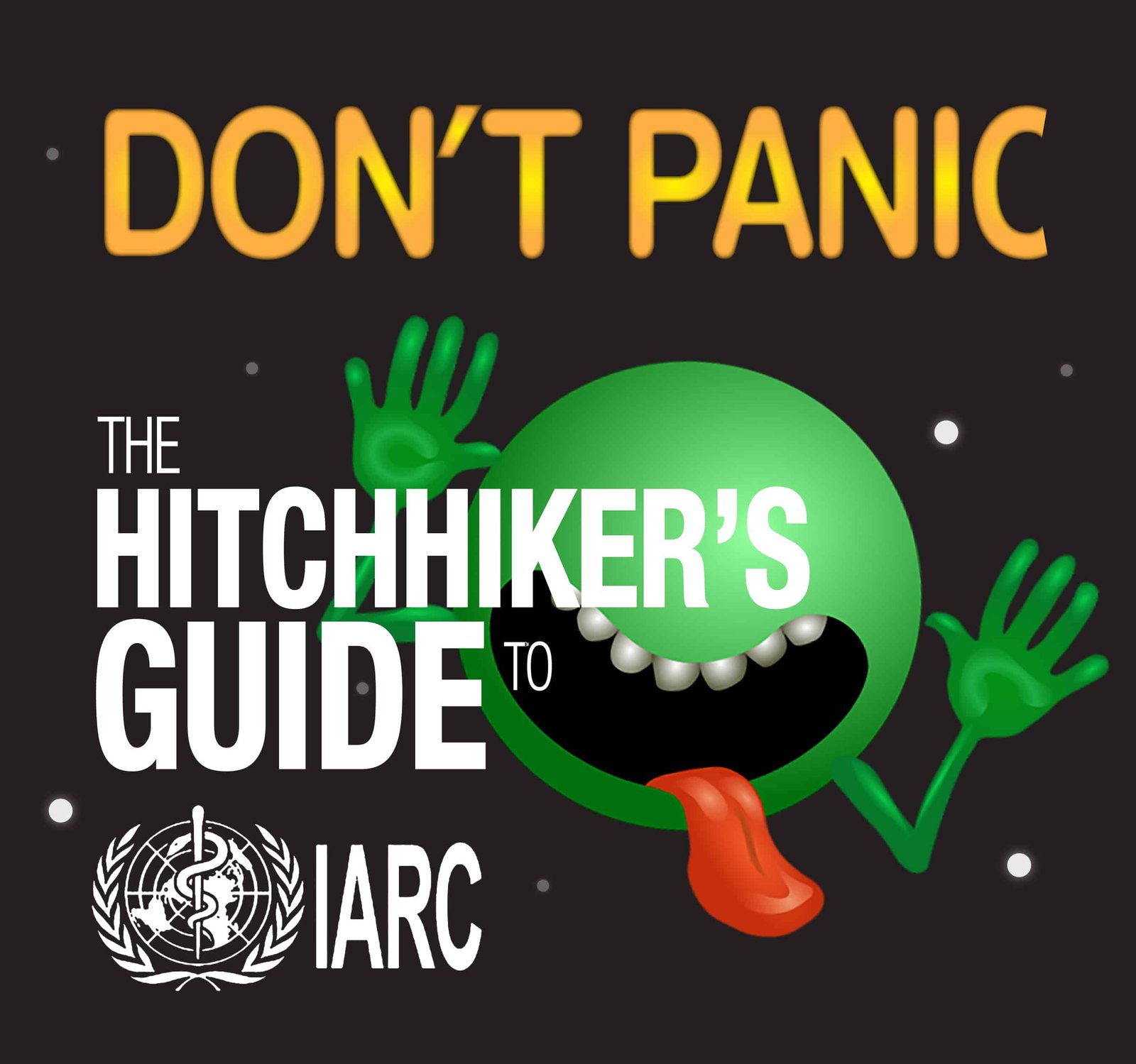
In Douglas Adams’ 1979 classic, The Hitchhiker’s Guide to the Galaxy, the supercomputer, Deep Thought, discovered that the ultimate answer to Life, The Universe, and Everything is “42”. Unfortunately, no one could remember what the question was. Like “Deep Thought”, the International Agency for Research on Cancer (IARC) Monograph program seems to have gone down the same path, creating an answer that seems to apply to almost everything, while forgetting the reason for the question.
The “42” answer that IARC has for everything is “carcinogenic” because its pronouncements are limited to: carcinogenic, probably or possibly carcinogenic to humans, or “I don’t know.” Pronouncements from the program are met with understandable concern, sometimes bordering on panic, as nearly everything it reviews is deemed to be some level of “carcinogenic to humans”. Over the years IARC has labeled red meat, pickled foods and salted fish, carpentry, working at night, using cell phones, and, just recently, firefighting as possible, probable or definitely carcinogenic. How are we to respond to these pronouncements in an appropriate way? Stop using my cell phone? Quit my job? Give up meat? If so, you’d also have to give up bread and many fruits and vegetables, as they contain substances that are considered carcinogenic under IARC’s system. Also, when IARC classified coffee and hot beverages as “possibly carcinogenic” and then many years later reclassifying coffee as “unclassifiable” (i.e., “I don’t know”), should I resume drinking coffee and stop drinking hot tea?
It wouldn’t be strange to start feeling anxious about all this and wondering if, we’re all, in fact, doomed. But as another famous line from the Hitchhiker’s Guide to the Galaxy tells us, “Don’t Panic.”
The IARC monograph program was set up in the early 1970s when our understanding of cancer and its causes was developing. At the time it was assumed that carcinogenicity was a fairly straight-forward, binary issue — either a substance caused cancer, or it did not – and that the number of cancer-causing agents was relatively limited. It soon became apparent that this was overly simplistic, to say the least. As scientists tested more and more substances, they found that at least half were probable or possible carcinogens, and that these substances not only exist in many of the fruits and vegetables that make up a healthy diet but about 60 percent of the life-saving medications on the market today. They also found that in many cases, the excessive doses given to lab animals in testing for carcinogenicity likely in themselves produced cancer simply by overwhelming biological systems.
Not surprisingly, the IARC Monograph program consistently finds just about everything can cause cancer. Of the 1,000 or so substances and life-style hazards they have evaluated, they have only found one (1) that definitely did not cause cancer.
But if the answer to the question, “Does a substance cause cancer?” is always “yes or I don’t know”, what practical value does it have? It’s kind of a “42” answer.
In the Hitchhiker’s guide, the scientists who had waited seven thousand years for “the answer” were understandably disappointed with the computer’s response. But as Deep Thought pointed out in its own defense, the question they asked wasn’t very specific.
Maybe like those scientists, the IARC Monograph program needs to get more specific with its questions and the context of those questions. Instead of the simplistic question, “Does a substance cause cancer?” they should ask questions like: “At what dose does it cause cancer? (in other words, how potent is it?) Is anyone, ever, likely to be exposed at that dose? Is it even possible, outside a laboratory setting, to consume or be exposed to enough of the substance to cause cancer? They might ask a few other questions as well – questions every other regulatory agency in the world asks as a matter of course – such as “is the effect specific to the route of exposure?”, “what is the mode of action?” (i.e., how does it cause cancer), and does that same mode of action apply to humans, not just lab animals? (See the list of publications at the end of this article for peer-reviewed ideas on better ways of understanding carcinogenesis, testing, interpretation, and classification of potentially carcinogenic substances and occupations.) If the answer to all these questions suggests that a substance poses a danger, then appropriate actions, from outright bans to limitations on use, can be taken to ensure safety.
If the agent is some other scenario such as a behavior, infectious agent, occupation, or lifestyle choice, then one would imagine the IARC research program or other institutions would conduct additional research to confirm the monograph program’s conclusion and, if confirmed, institute a program to determine public health improvements to prevent carcinogenic outcomes.
Asking the wrong questions can lead to an answer equivalent to Deep Thought’s “42” and the elimination of useful or even life-saving substances or professions. Nevertheless, whatever the answer to the question asked, even if it is to the wrong question, remember: “Don’t Panic.”
The IARC Monograph program needs to have a conversation about making its pronouncements more useful. The upcoming IARC Scientific Workshop on Bias Assessment in Cancer Hazard Identification in October 2022 would be a good place to start this conversation.

Authors and affiliations:
- Samuel M. Cohen, MD, PhD, Havlik-Wall Professor of Oncology, University of Nebraska College of Medicine
- Penny Fenner-Crisp, PhD, former Director of the U.S. Environmental Protection Agency’s Health and Environmental Review Division, Office of Pollution Prevention and Toxics.
- Alan Boobis, PhD, Emeritus Professor of Toxicology, Imperial College London, former Editor-in-Chief, now emeritus editor, of Food and Chemical Toxicology.
- Angelo Moretto, MD, PhD, Professor of Occupational Medicine, University of Padova, Italy and Director, Occupational Health Unit and Post-Graduate School in Occupational Health, Padova University Hospital.
___________________________________________________
Supporting published, peer-reviewed research includes:
· Boobis AR, Cohen SM, Dellarco VL, Doe JE, Fenner-Crisp PA, Moretto A, Pastoor TP, Schoeny RS, Seed JG, Wolf DC. Classification schemes for carcinogenicity based on hazard-identification have become outmoded and serve neither science nor society. Regul Toxicol Pharmacol. 2016 Dec;82:158-166. doi: 10.1016/j.yrtph.2016.10.014. Epub 2016 Oct 22. PMID: 27780763.
· Wolf DC, Cohen SM, Boobis AR, Dellarco VL, Fenner-Crisp PA, Moretto A, Pastoor TP, Schoeny RS, Seed JG, Doe JE. Chemical carcinogenicity revisited 1: A unified theory of carcinogenicity based on contemporary knowledge. Regul Toxicol Pharmacol. 2019 Apr;103:86-92. doi: 10.1016/j.yrtph.2019.01.021. Epub 2019 Jan 8. PMID: 30634023.
· Doe JE, Boobis AR, Dellarco V, Fenner-Crisp PA, Moretto A, Pastoor TP, Schoeny RS, Seed JG, Wolf DC. Chemical carcinogenicity revisited 2: Current knowledge of carcinogenesis shows that categorization as a carcinogen or non-carcinogen is not scientifically credible. Regul Toxicol Pharmacol. 2019 Apr;103:124-129. doi: 10.1016/j.yrtph.2019.01.024. Epub 2019 Jan 18. PMID: 30660801.
· Samuel M. Cohen, Alan R. Boobis, Vicki L. Dellarco, John E. Doe, Penelope A. Fenner-Crisp, Angelo Moretto, Timothy P. Pastoor, Rita S. Schoeny, Jennifer G. Seed, Douglas C. Wolf, Chemical carcinogenicity revisited 3: Risk assessment of carcinogenic potential based on the current state of knowledge of carcinogenesis in humans, Regulatory Toxicology and Pharmacology, Volume 103, 2019, Pages 100-105, ISSN 0273-2300, https://doi.org/10.1016/j.yrtph.2019.01.017.
· Doe, J.E., Boobis, A.R., Cohen, S.M. et al. The codification of hazard and its impact on the hazard versus risk controversy. Arch Toxicol 95, 3611–3621 (2021). https://doi.org/10.1007/s00204-021-03145-6
· Doe, J.E., Boobis, A.R., Cohen, S.M. et al. A new approach to the classification of carcinogenicity. Arch Toxicol (2022).https://doi.org/10.1007/s00204-022-03324-z
Image par Benjamin Balazs de Pixabay